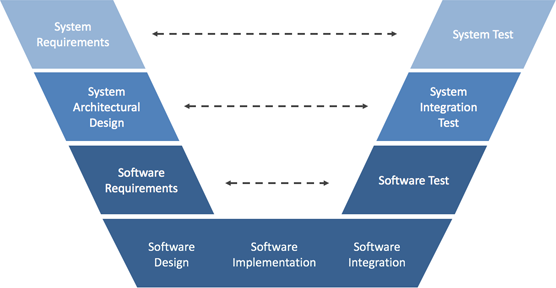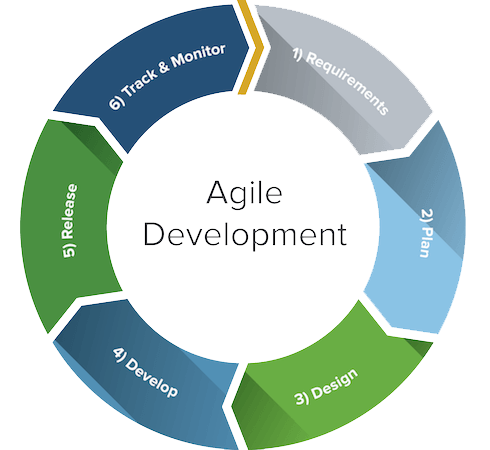Software Development
At Romsoft, we design and build safety critical software to be used in the medical and aerospace sectors and commercial software. We can develop a software solution through all stages of the development process or focus on one stage of the cycle.
Contact Romsoft.
We use the V model approach to develop our safety critical software.

When a company looks to create software for a client, they will typically complete each stage of the V model, before moving onto the next stage of development. The problem here, is that the user/client will not get to see and test the software until it is near completion. At this stage alterations would mean re-visiting the early stages of the life cycle and possibly a re-design of the software – and naturally this will impact on time and budgetary restraints.
When we create software, we take a different approach. We aim to maximise efficiency by taking a more collaborative approach. We do this, by incorporating AGILE processes into every stage of the software creation life cycle.
At each step of the development, we will identify key requirements from the client, so we know just what to implement at every stage. These key requirements will underpin each section of the design, so that when we complete a prototype release, the client will be able to offer feedback and we can respond to this. Our emphasis on ongoing communication with the client creates a unified approach to design and ensures a more dynamic and responsive system of software development.

In the development of safety critical software, we use UML (Unified Modelling Language) which provides excellent clarity for the client. During the design process, the use of diagrams to illustrate essential components of the software means clients have a clearer picture of how the software operates and functions.
Ensuring that the client is fully informed ensures that the process is efficient and streamlined.
We can create a range of desktop-based applications including graphical user interfaces for test software and PC based applications to communicate with embedded systems. This includes RS-232 and RS-485 type communications. We have significant experiencing creating desktop applications, that can compile information to be stored in an embedded software.